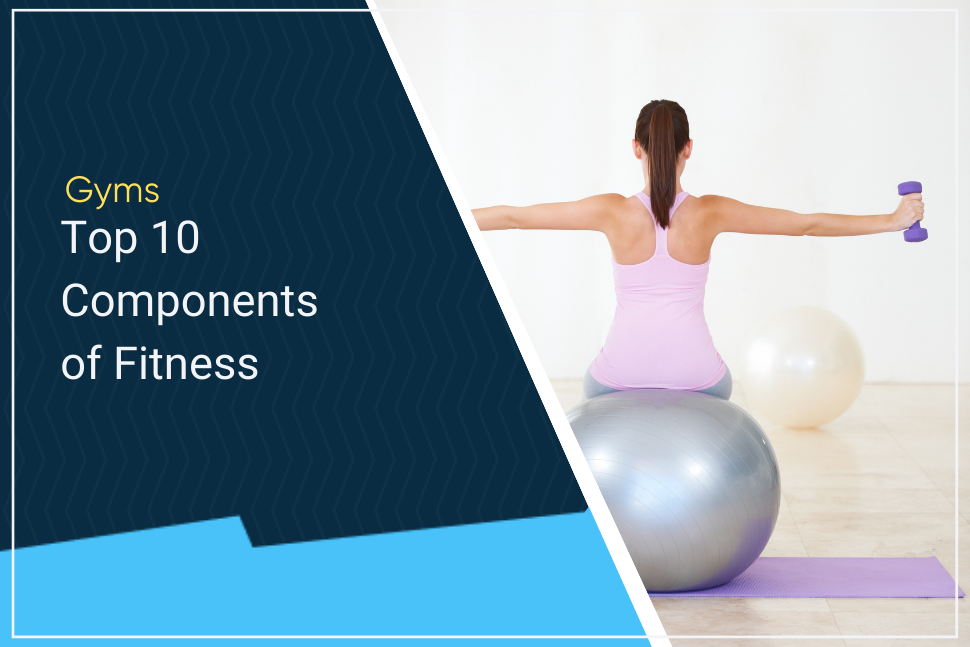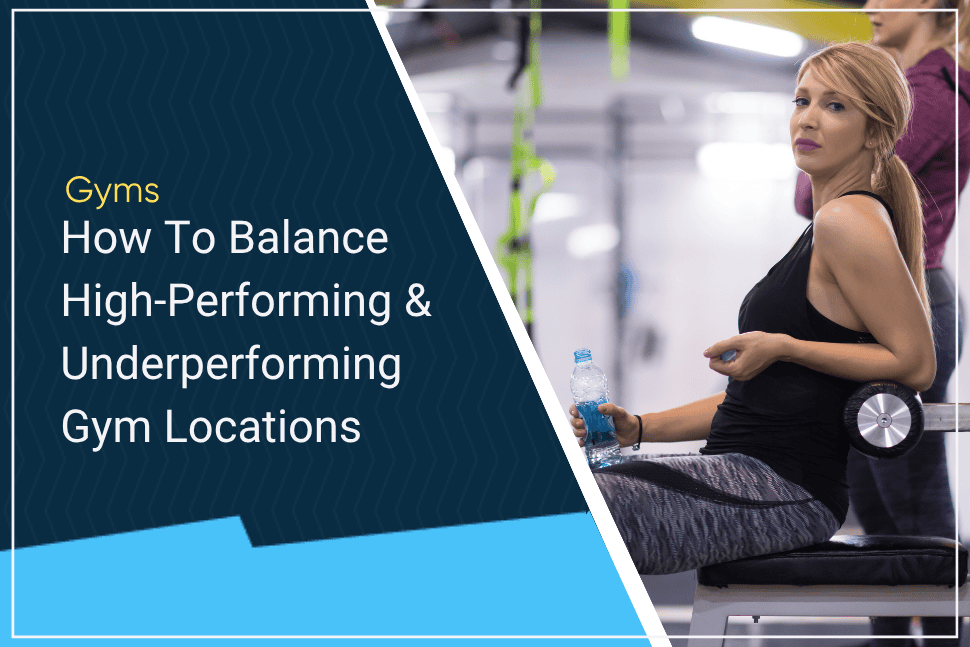The Components of Physical Fitness provide a sophisticated guideline to improve physical health. The physical fitness components include Muscular Strength, Muscular Endurance, Cardiovascular Endurance, Body Fat Composition, Balance and Coordination, Speed or Quickness, Flexibility, Agility, Power and Reaction time.
The health-related Components are those which apply to your bodily condition, like Muscular Strength Endurance, Cardiovascular Endurance, Flexibility and Body Composition. Fitness Components are used to regulate training and promote health in the upside and the downside, and conventional, popular exercises like Weight Lifting and Jogging showcase the Components vividly.
What are Fitness Components?
Listed below are the different components of physical fitness.
- Muscular Strength: The amount of physical force your muscles can put out, how much weight you can lift.
- Muscular Endurance: The ability for a muscle group to engage repetitively over an extended period of time, also known as the measure of a muscle group’s “gas tank.”
- Cardiovascular Endurance: The ability to operate for extended periods with an elevated heart rate.
- Body Fat Composition: The relation between the amount of body fat you have to your total body mass.
- Balance and Coordination: Balance is defined as the ability to remain upright and demonstrate control over your body, coordination is the ability to control members of your body with efficiency and dexterity.
- Speed or Quickness: The ability to move all or part of the body as quickly as possible.
- Flexibility: The ability to stretch muscles without pulling or tearing them.
- Agility: The ability to perform rapid whole-body movements with change of velocity or direction in response to a stimulus.
- Power: The amount of strength a person is able to use during a movement, together with the speed of the motion.
- Reaction time: The speed at which one can respond to a stimulus
Muscular Strength
The Fitness Composition of Muscular strength is defined as the amount of physical force your muscles can put out, or how much weight you can lift. This can be measured by estimating a person’s one repetition maximum weight – or “one rep max” – within a particular lift. This means that the weight is the heaviest that the muscles can move without injury or failure. Programs dedicated to improving this statistic will involve working sets within a certain percentage of this metric.
Muscular Endurance
Muscular Endurance can be defined as the ability for a muscle group to engage repetitively over an extended period of time. This is the measure of a muscle group’s “gas tank.” The measurement of Muscular Endurance shows how many repetitions can be performed within a certain exercise without failure or fatigue. Unlike the fitness composition of Muscular Strength, this attribute involves the amount of repetitions rather than the amount of weight.
Cardiovascular Endurance
Cardiovascular Endurance is a component of physical fitness that measures the ability to perform high-intensity exercise. This includes the ability to operate for extended periods with an elevated heart rate. Your VO2 Max measures your body’s consumption and usage of oxygen during exercising. Marathon runners, sprinters, combat sports athletes, and swimmers are examples of athletes that thrive on properly trained Cardiovascular Endurance.
Body Fat Composition
The standard definition of Body Fat Composition is the relation between the amount of body fat you have to your total body mass. This metric includes the fat around your internal organs and around your muscles. Calipers measure body fat on your chest, abs and thigh in the most typical tests, pulling muscle away from the fat and measuring the fold. The NCAA cites that healthy adult males will average 10-22% body fat depending on genetic factors such as height and weight and healthy adult females will average 20-32% body fat depending on the same factors.
Balance and Coordination
Balance is defined as the ability to remain upright and demonstrate control over your body, and coordination is the ability to control members of your body with efficiency and dexterity. The fitness of stabilizing muscles has a lot to do with balance. This can be measured by one’s ability to stand on one leg without swaying or using the other leg for assistance for an extended period of time. Coordination can be measured by observing the fluidity and precision of bodily movement. Competitive dancers are examples of people who demonstrate good coordination.
Speed or Quickness
Oxford defines speed as the rate at which something or someone moves or operates. When speaking of Speed as a fitness component, the word “quickness” is synonymous with the Oxford definition, meaning it is defined as the ability to move all or part of the body as quickly as possible. Testing speed is usually prevalent in sports revolving around running, with tests like the 40 yard dash being among the most popular. Generally it is measured by recording the amount of time it takes for someone to sprint from point A to point B.
Flexibility
Flexibility as a component of fitness is best defined as the ability to stretch muscles without pulling or tearing them. Measuring this is done by performing a variety of different stretching techniques to stretch your muscles as far as the range of motion will allow without tearing. Gymnasts and Martial Artists showcase flexibility in their practices. As the range of motion of different muscle groups is stretched to uncharted territories with improvement, it is important to build strength in the newfound range of motion to avoid injury.
Agility
One could think of agility as the blend of two fitness components – Speed and Coordination. This is the ability to not only move quickly, but efficiently. Agility is measured similar to how speed is measured, but the separation between the two Compositions lies in the necessity for Coordination. The measured ability to not only move fast, but to be able to stop and perform a different body motion explosively and quickly demonstrates developed agility. Football players rely on techniques such as spin moves, jukes, and hurdles to out-maneuver their opponents on the gridiron, demonstrating agility in all levels of football.
Power
Power can be defined as the combination of strength and speed. This is the measure of not just how much weight one can lift, but the speed and explosiveness with which one can lift. Power is most often measured and demonstrated in Olympic weightlifting techniques, such as the power clean and the power snatch, where the goal is to move the weight from the floor to the complete position smoothly explosively.
Reaction time
Simply defined, reaction time is the speed at which one can respond to a stimulus. There are many ways to measure reaction time. For example, a football player is 25 yards away. You throw the ball, and once the ball is half of the way to him you yell the signal for him to quickly turn around and catch the ball. An example of where reaction time would be an important fitness component to develop is in the realm of tennis. Tennis players demonstrate reaction time by observing within moments the direction the ball is headed on the court, utilizing Agility to pivot and return the ball within seconds.
What are the Five Components of Fitness?
The five health related components of fitness are muscular endurance, cardiovascular endurance, flexibility, muscle strength, and body composition. Each plays an important role in the state of your overall physical fitness, prioritizing each of these components through physical exercise and training is vital to improving health.
Muscular Endurance
Muscular endurance refers to the ability of your skeletal muscles to perform over an extended period without fatigue. Improving the muscular endurance of your major muscle groups helps you to perform everyday activities like carrying groceries, carrying luggage, and performing everyday tasks without tiring out.
Many sports rely on muscular endurance for sustained performance. The more endurance your muscles have, the better they can maintain joint stability and perform with proper biomechanics throughout extended gameplay. This helps prevent sloppy form due to exhaustion, which may impair performance or lead to injury.
Cardiovascular Endurance
Cardiovascular endurance is about how efficiently the heart and lungs transport oxygen and nutrients to your muscles for an extended period of time. It is also known as aerobic fitness.
Cardio endurance helps you sustain aerobic exercise and is a key indicator of how healthy your heart and lungs are. The greater your cardio endurance is, the better able your heart is able to pump blood containing oxygen and nutrients to your muscles.
Cardiovascular endurance physical fitness training also enhances respiratory function, improving breathing rate and oxygen consumption. The greater your cardiovascular endurance, the more energy you will have, with reduced levels of fatigue.
Cardio endurance exercise is an important part of the weight loss process. Cardio exercises such as running, cycling, and rowing burn a significant amount of calories, helping to establish the negative calorie balance needed to burn body fat.
Flexibility
Flexibility is the ability of your muscles, ligaments, and tendons to elongate to their maximum potential. Flexible muscles are stretchy and pliable.
If you don’t have good flexibility, such everyday activities as getting out of bed, bending down to pick up a child or squatting down to lift a heavy object can become more demanding. A lack of adequate flexibility can also impair your athletic ability, as you will be unable to reach the full potential, strength, and power of your muscles.
Muscle Strength
Increasing the strength of the skeletal muscles will improve a person’s efficiency with everyday tasks, sports, and other physical pursuits. Muscle endurance will also improve so that a person can perform tasks for longer without being fatigued.
Research confirms the ability of strength training to reduce the risk of a whole host of ailments. This is particularly true regarding such age-related conditions as:
- Arthritis
- Poor balance
- Diabetes
- Osteoporosis
- Obesity
- Back pain
- Breathing problems
- Depression
- Dementia
Strength training has been shown to improve emotional makeup and promote better sleep. It also builds self-esteem and self-efficacy.
Body Composition
Body composition relates to the proportion of fat, muscle, bone, and other tissue that make up the human body. To achieve a healthy body composition, you should reduce your body fat levels to the healthy range.
For men, a healthy ‘fitness’ range is 14-17 percent, while for women it is 21-24 percent. Men with a body fat percentage of more than 24% are considered overweight. The overweight threshold for women is 32%.
Excess body fat leads to a raft of significant health problems. These include an increased risk of such diseases as heart disease, type 2 diabetes, hypertension, and certain cancers.
Body composition fitness is also about increasing lean muscle mass. this is achieved through resistance training and anabolic nutrition centered on protein and establishing a daily caloric excess. Improved muscle mass is associated with better metabolic health, improved functional capacity, and reduced risk of injury, especially among seniors.
Muscle tissue is metabolically active, meaning that it takes a lot of energy to sustain it. So, the more muscle you have on your frame, the more calories your body is burning, even at rest. As a result, the metabolism of a muscular person is faster than one who is carrying less muscle.
To improve your body composition, you should engage in a holistic fitness program that includes progressive resistance training several times per week as well as 3-4 sessions of cardiovascular exercise. your cardio should be balanced between longer steady-state sessions and shorter bouts of high-intensity interval training (HIIT).
Analyzing your body composition is an important part of monitoring your health and fitness. When you step on a standard scale, you get an overall weight that tells you nothing about the proportion of fat or muscle you have. For that, you need to find out what your body fat percentage is.
You can now purchase bathroom scales that use electrical impulses to detect your body fat percentage. This is done with bioelectrical impedance analysis that sends a low-level electric current through the body that measures the resistance from different types of tissue.
You can also use skinfold calipers to measure your body fat percentage. Skinfold measurements are taken at specific parts of the body, including the triceps, abdomen, and thighs. These measurements are then fed into a formula to work out the person’s percentage of body fat.
Conclusion
A thorough understanding of the five components of physical fitness will help to ensure that you’re putting in place a well-rounded holistic training plan. Including all five aspects means that you won’t have any chinks in your fitness armor that could lead to weakness, imbalance or injury.
Use the information presented here to develop a weekly training plan that includes muscular and cardio endurance, flexibility, muscular strength, and body composition. Then put that plan into consistent action, and you will become unstoppable.
How can the Components of Fitness Affect Your Health?
Regular exercise and physical activity promotes strong muscles and bones. It improves respiratory, cardiovascular health and overall health. Staying active helps you maintain a healthy weight, reduces your risk of type 2 diabetes, heart disease, and reduces your risk for some cancers.
What Fitness Component is required to maintain Good Body Mobility?
Flexibility is one of the most important, yet often overlooked, components of physical fitness. Flexibility training ensures that your body can move through its entire range of motion without pain or stiffness.
What Fitness Component is required in Weightlifting?
Muscular Strength – the “power” that helps you lift and carry heavy objects. Building muscular strength will provide your body with the means to successfully fulfill the demands of weightlifting. The way to increase strength is to train with heavy weights, working in the 4 – 6 or 12 – 15 rep ranges.
What are the health-related components of going into the gym?
Body composition, flexibility, muscular strength, muscular endurance and cardiorespiratory endurance are all components of going into the gym.
What are the health-related components of jogging?
Jogging is a form of aerobic endurance which aligns with cardiorespiratory endurance. In addition, by running you are building muscular endurance in your calves, quadriceps, and anterior tibialis muscles.
What are the benefits of Components of Fitness?
The Components of Fitness offer a guideline for what to improve in your health. By following the rubric provided by the Components of Fitness health goals can be achieved in a structured and measurable way. Following the Components also provides trainers with the ability to formulate exercise plans for their clients that line up with the necessary improvement in one of the Components.
What are the downsides of Components of Fitness?
The Components are specific to each designation of health, but it does not account for bodily injury, genetic disease and other physical, mental and/or emotional hindrances. Diseases that affect diet in turn affect the amount of exercise in the event of a potentially unavoidable caloric deficit just as much as the type of exercise is determined by ability to perform certain movements. The Components of Fitness provide a guideline for physical training, but the guideline must bend to the needs of its users.
 Gym Owner Statistics: The State of Gyms, Member Trends, and Usage Data
Gym Owner Statistics: The State of Gyms, Member Trends, and Usage Data




 EN (English)
EN (English)
 JA (日本語)
JA (日本語)